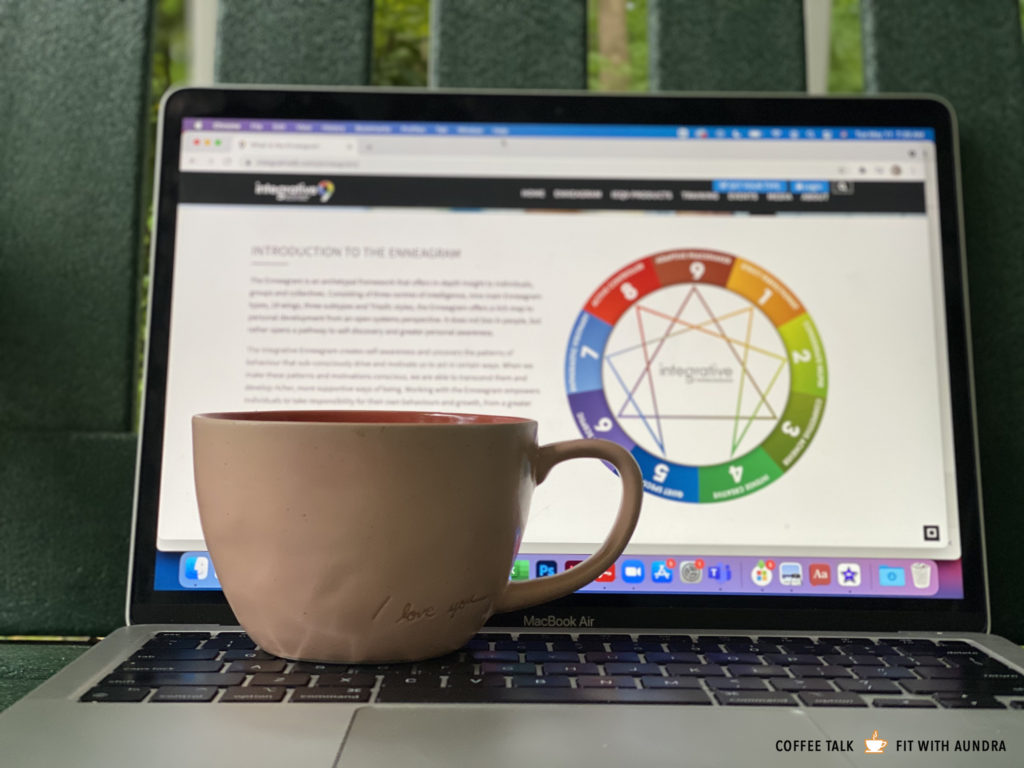Coffee Talk #233: Enneagram 101
It’s FWA FAVORITES month at FWA and I want to share some of my favorite things!
Today’s topic: Enneagram 101

What is the enneagram?
The enneagram is a system of personality typing that describes patterns of how individuals interpret the world and manage their emotions.
Tell me more.
The enneagram is a 9-pointed figure that consists of three centers of intelligence, nine main types, and three subtypes. Overall, the enneagram raises our self-awareness and helps to uncover patterns of behavior that drive and motivate us.
What’s my number?
There are several tests that you can take to determine your number. They range from free to paid tests. There are even enneagram coaches who can chat with you about your number, subtype, wing, and more.
Why do I have more than one number?
Sometimes, when you take an enneagram test, you’ll get two numbers that score the same. Everyone exhibits pieces of each type, to a certain degree. If you score closely on two numbers, I’d take another test or do some digging into each type. The one that resonates with you is your number.
Let’s chat about that for a moment – the one that resonates with the REAL you is your number. Not the you that you share with others. The you that is true when you’re all alone. The enneagram is you—your actions and reactions.
Talk to me about wings and tritypes.
In addition to your main number, or type, there are some other numbers on the ‘gram that become important. First, your wing. Looking at the enneagram figure, your wing possibilities are the numbers immediately surrounding your main number. For example, as an 8, my wing possibilities are 7 and 9.
Once you determine your main type, now it’s time to dig into your wing possibility. This is your secondary type. An 8w7 is different than an 8w9. Your wing is your secondary number, so you also tend to take on the qualities of that number.
There are also tritypes and subtypes, and even more. Tritypes represent your number on each major center of intelligence on the enneagram. There is EMOTION (2, 3, 4), HEAD (5, 6, 7) and GUT (8, 9, 1). This represents your immediate reaction—what you rely on for your actions and reactions the most.
Subtypes are your instinctual centers. There is self-preservation, social, and 1:1. These are the basic instinctual drives that are essential for human experience. There are 27 total subtypes.
Why use the enneagram?
I love the enneagram as a framework of understanding. What makes a person tick? What motivates someone? It’s incredibly interesting when fitness clients share their enneagram numbers with me. I’m able to create a deeper understanding of their patterns and behaviors and also build a better understanding of clients.
I can see immense benefits to utilizing the enneagram in a work group – it can help reduce criticism and judgement, enhance business procedures, and create a stronger bonded working group. When you understand where people are coming from, it makes it better to work with them. Some individuals will always be difficult but knowing their motivations and habits can shed light to their way of thinking, their reactions, and their overall work style.
What I love about the enneagram:
Instead of boxing people in like many self-assessments, the enneagram opens a pathway to greater self-awareness. It reveals what might hold us back and offers an understanding of why we act and react the way we do.
Cautions with the enneagram:
This is a learning tool. It’s not a shield nor a sword. You cannot hide behind your number, instead it’s something that informs you of who you are at the core. It’s a chance to understand yourself and a chance to be the best version of yourself.
How can I learn more?
Here are some of my favorite resources:
- Integrative 9
- Truity (free test)
- Ian Cron
- Your Enneagram Coach
- Enneagram Academy (free test)
- Enneagram Institute
- Crystal knows (best explanation of each type)
Leave a Reply